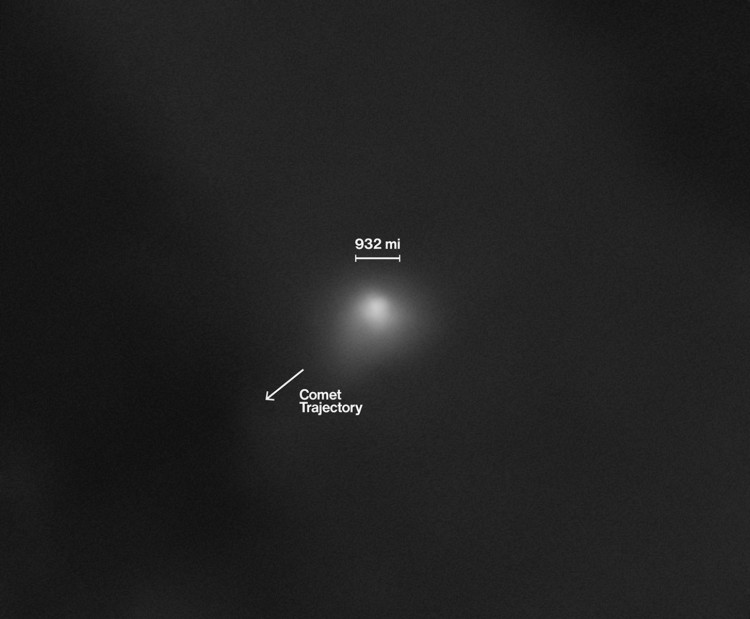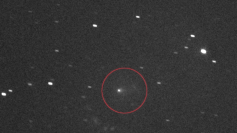The interstellar object 3I/ATLAS is drawing renewed scrutiny from astronomers after a striking new photograph captured in late November showed features that experts say challenge established models of comet physics. The object-only the third confirmed visitor from another star system after 1I/'Oumuamua and 2I/Borisov-now appears to be undergoing physical changes and acceleration that defy earlier observations, prompting debate over whether it represents an extreme natural phenomenon or something more unconventional.
The latest image, taken on November 22, 2025, by astrophotographer Mitsunori Tsumura using a half-metre telescope, depicts 3I/ATLAS passing near the galaxy NGC4454 in the constellation Virgo at a distance of roughly 300 million kilometres from Earth. The comet displays an enormous 5-million-kilometre primary tail and a 1-million-kilometre anti-tail pointing toward the Sun. These distances stand in sharp contrast to the object's measured speed of about 400 metres per second-so slow that it would need a month to traverse a single million kilometres.
Harvard astrophysicist Avi Loeb, leading the Galileo Project analysis of the object, has focused on the anti-tail, arguing that its structure raises fundamental questions. The solar wind at the object's location blows at about 400 kilometres per second, "at least one thousand times faster than the thermal speed of gas naturally outflowing from a comet heated by the Sun." Loeb notes that for the anti-tail to hold its beam-like form against such force, its mass density must be roughly "one million times greater than the density of the solar wind itself."
That requirement forces a severe mass-loss scenario. According to Loeb's calculations, 3I/ATLAS would need to shed about 200 tons per second for each "square area measuring 0.3 million kilometres on a side" merely to sustain the anti-tail. When the main tail is accounted for, total mass lost during October and November would reach several billion tons-equal to nearly ten percent of Loeb's earlier minimum mass estimate of 33 billion tons.
The object's motion has deepened the mystery. Throughout July, August, and September, 3I/ATLAS showed no measurable non-gravitational acceleration, behaving "like a rock." But around its October 29 perihelion, NASA's JPL Horizons system detected a dramatic shift now assessed as statistically significant at "ten standard deviations (10-sigma)." For a natural comet, generating that level of acceleration would require expelling more than ten percent of its entire mass as gas and dust-on top of the mass already needed to form its tails.
Loeb has raised an alternative possibility: propulsion mechanisms rather than thermal sublimation. Chemical thrusters could reduce the required mass loss "by two orders of magnitude," while ion drives could lower it "by four orders of magnitude," he argues, if the jets on 3I/ATLAS consist of high-velocity exhaust rather than sublimated ice.
The visual evidence captured by Tsumura appears consistent with sustained, highly collimated activity. The anti-tail does not dissipate as expected from random outgassing, and the coma maintains a steady glow rather than the pulsed emissions typical of a fragmenting comet. These factors have accelerated calls for deeper study.
Upcoming spectroscopic measurements scheduled before the object's December 19 Earth approach may clarify whether the jets contain material characteristic of traditional cometary activity or something more anomalous. Astronomers will also watch closely as 3I/ATLAS approaches Jupiter's Hill radius on March 16, 2026, a distance Loeb identifies as "exactly 53.5 million kilometres," matching the planet's gravitational boundary.




